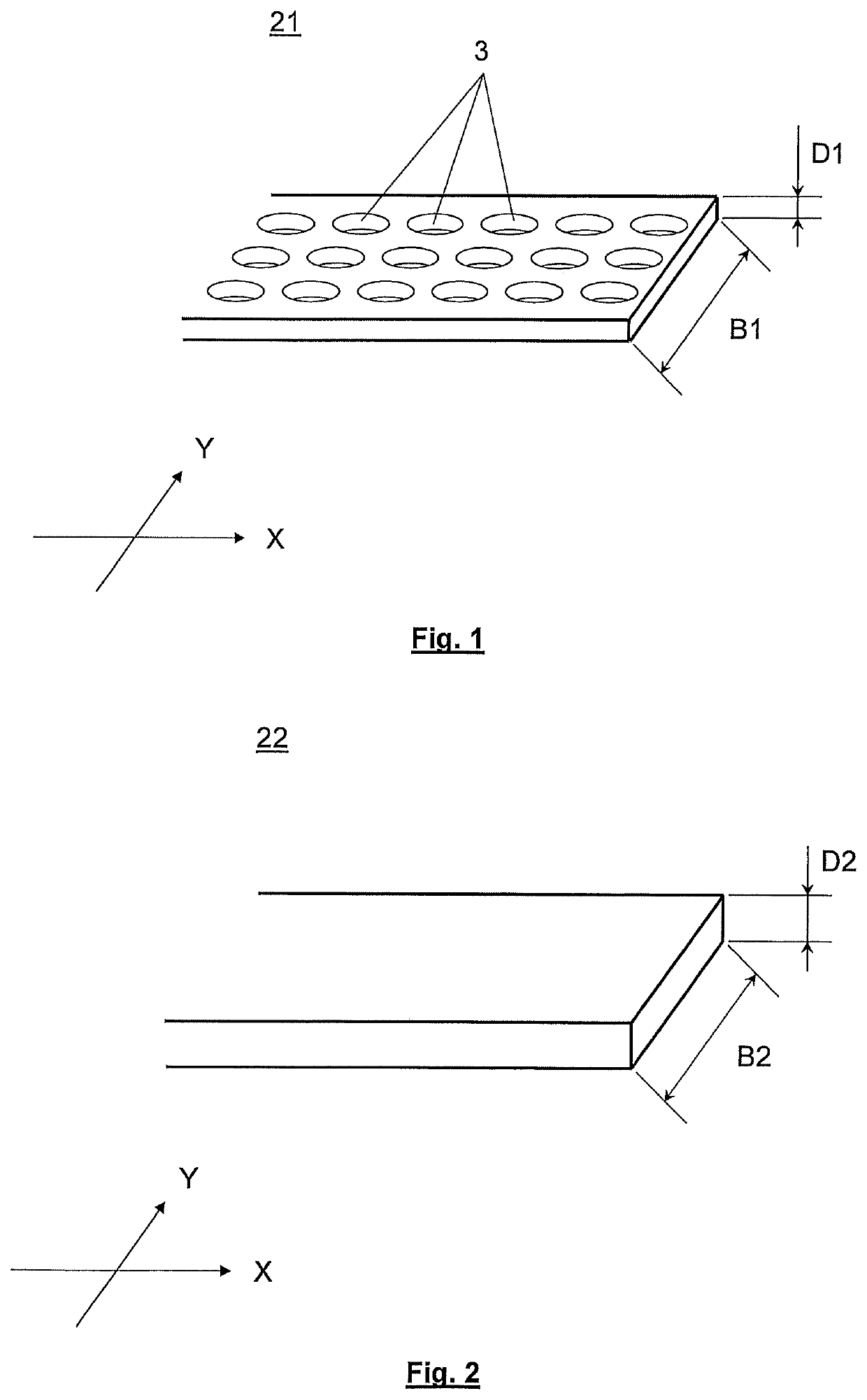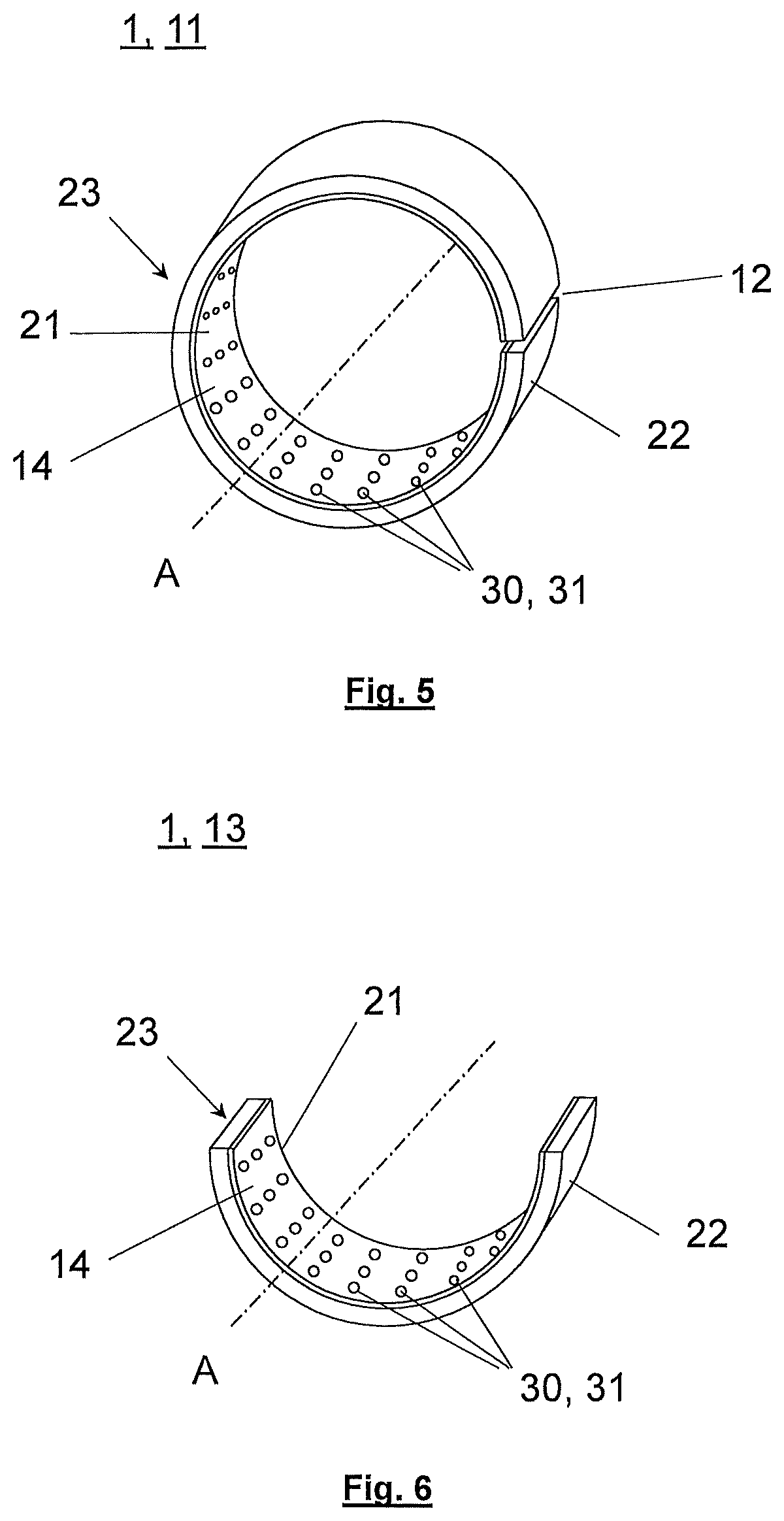Method for producing a sliding element
a technology of sliding element and sliding bearing, which is applied in the field of method for producing sliding element, can solve the problems of only recycling with considerable effort, high cost of monometallic sliding bearing composed of such materials, and punching offcuts, and achieve the effect of improving the sliding properties of the bearing and reducing the weight of the sliding elemen
- Summary
- Abstract
- Description
- Claims
- Application Information
AI Technical Summary
Benefits of technology
Problems solved by technology
Method used
Image
Examples
Embodiment Construction
[0040]FIG. 1 shows a first material 21 in the form of a band material of width B1 and of thickness D1. The band-shaped material extends over an undefined length in the X direction. The width B1 is measured in the Y direction. The thickness D1 is measured in a direction that is perpendicular to X and Y. The material has a multiplicity of apertures 3. The apertures 3 may have a round shape as in the illustrated case. Other shapes, such as for example oval, elongate, triangular or rectangular, are also possible.
[0041]FIG. 2 shows a second material 22 in the form of a band material of width B2 and of thickness D2. The band-shaped material extends over an undefined length in the X direction. The width B2 is measured in the Y direction. The thickness D2 is measured in a direction that is perpendicular to X and Y. In the illustrated case, the second material 22 is embodied as a solid material and has planar surfaces. Neither apertures nor any other structural elements are present.
[0042]FIG...
PUM
| Property | Measurement | Unit |
|---|---|---|
| angle | aaaaa | aaaaa |
| thickness | aaaaa | aaaaa |
| area | aaaaa | aaaaa |
Abstract
Description
Claims
Application Information
 Login to View More
Login to View More - R&D
- Intellectual Property
- Life Sciences
- Materials
- Tech Scout
- Unparalleled Data Quality
- Higher Quality Content
- 60% Fewer Hallucinations
Browse by: Latest US Patents, China's latest patents, Technical Efficacy Thesaurus, Application Domain, Technology Topic, Popular Technical Reports.
© 2025 PatSnap. All rights reserved.Legal|Privacy policy|Modern Slavery Act Transparency Statement|Sitemap|About US| Contact US: help@patsnap.com



